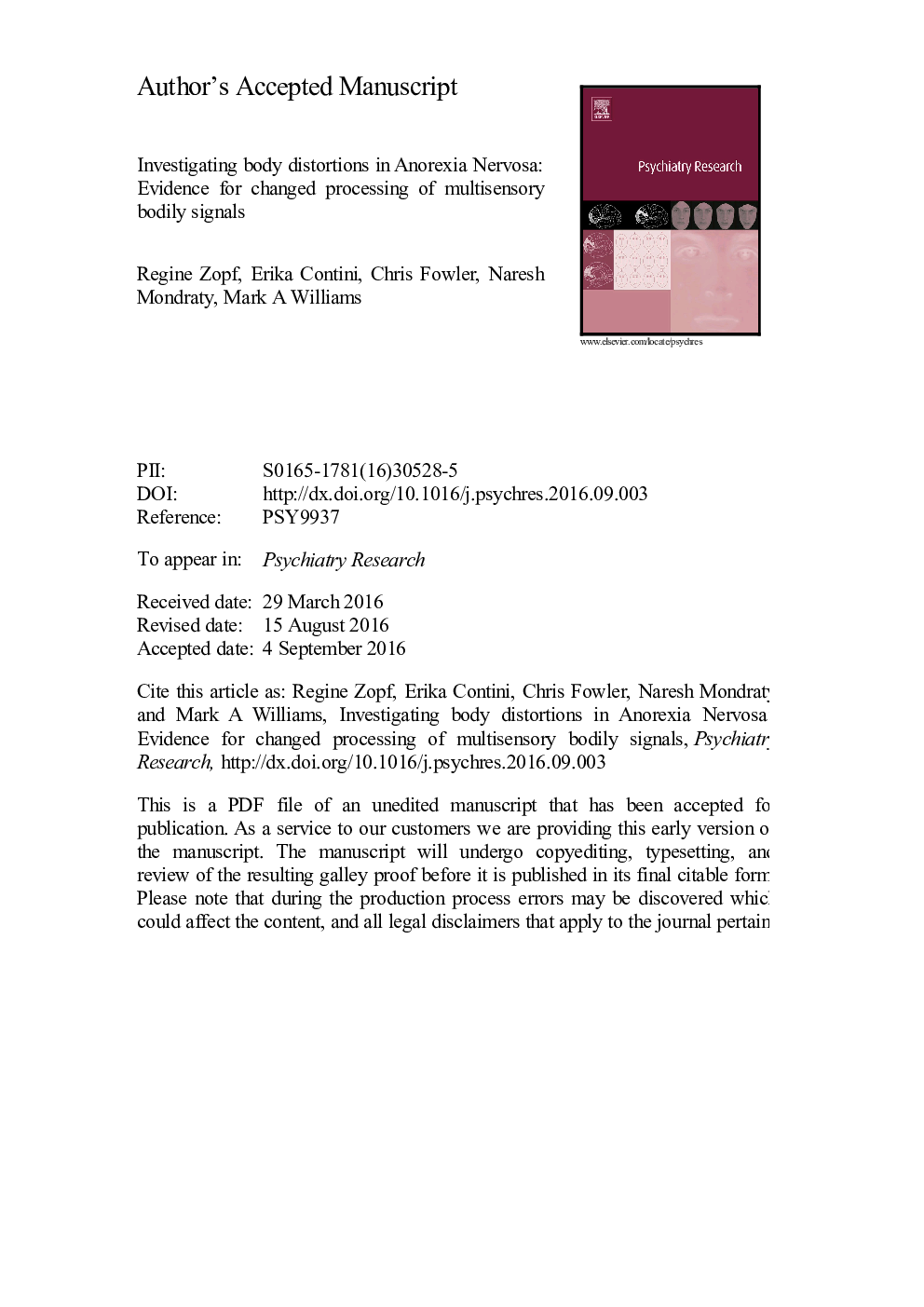| Article ID | Journal | Published Year | Pages | File Type |
|---|---|---|---|---|
| 6812531 | Psychiatry Research | 2016 | 52 Pages |
Abstract
Body size and shape distortion is a core feature of Anorexia Nervosa (AN)Â - patients experience their body as fat while objectively being very thin. The cause of this distortion is unclear and disturbances in body perception could be involved. Body perception comprises estimating shape and location of one's body and requires integrating multisensory signals. We investigated if and how body location perception is changed and tested 23 AN patients and 23 healthy controls (HC) in a Rubber Hand Illusion (RHI) reaching paradigm. We presented two types of multisensory conflicts (visual-proprioceptive hand location; visual-tactile touch synchrony) and tested if the impact of visual-proprioceptive and visual-tactile signals on hand location perception differs between AN and HC groups. We found significant group differences in shifts of reaching trajectories, indicating that the influence of proprioceptive signals on hand location estimates is reduced in AN. Hand location estimates were relatively more biased towards external visual information, and shorter illness durations predicted a larger visual bias. Although touch synchrony also significantly influenced hand location estimates, this effect did not differ between groups. Our findings provide compelling evidence that multisensory body location perception - specifically the processing of visual-proprioceptive signals - is changed in AN.
Related Topics
Life Sciences
Neuroscience
Biological Psychiatry
Authors
Regine Zopf, Erika Contini, Chris Fowler, Naresh Mondraty, Mark A. Williams,
